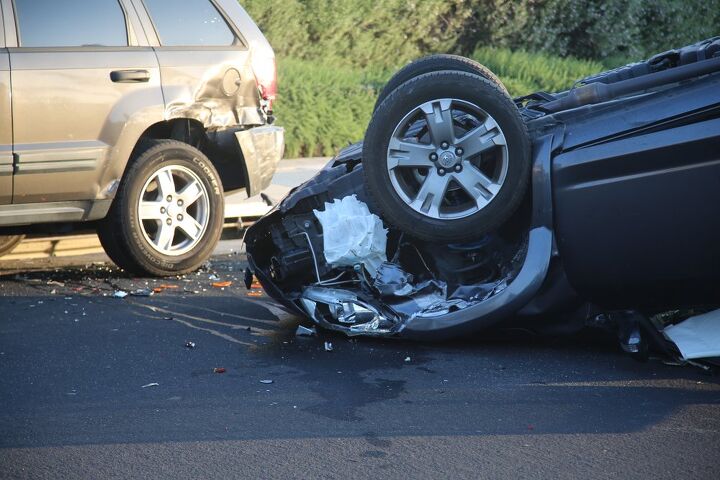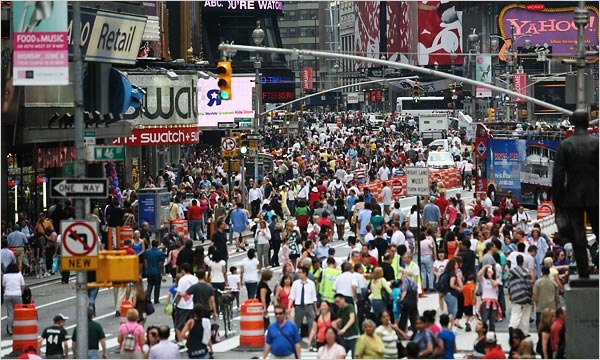#TrafficFatalities
Why Are Traffic Deaths Increasing While People Are Driving Less?
The latest data from the National Highway Traffic Safety Administration (NHTSA) is confirming what local agencies have already been suggesting. Last year represented another sizable increase in U.S. roadway fatalities, pitching up by 10.5 percent over the elevated death rate witnessed in 2020. The agency has estimated that 42,915 people were killed in 2021, whereas 2020 resulted in 38,824 fatalities — a 7.1-percent increase over the declines seen in 2019. While the current situation is not nearly as bad as the rates witnessed during the 1970s, this still represents the highest per capita fatalities in sixteen years and everyone is trying to get a handle on why.
Traffic deaths have been on the rise since the start of the pandemic, confusing everyone who counts crashes because the supporting data also shows that there was a lot less driving being done during the period. Historically, years where people are disinclined from hitting the road due to a beleaguered economy tend to represent far fewer traffic-related fatalities. We can see this happening in 1942 when the U.S. braced itself to enter World War II by rationing everything from fuel to rubber. Another glaring example takes place in 1932, as the nation reached the darkest point in the Great Depression. In fact, there are very few examples of per capita improvements in on-road deaths from the pre-war period, and those that do exist coincide directly with economic recession.
U.S. Pedestrian Deaths Reach Highest Level in Decades
While the preliminary data from the National Safety Council shows 2019 being a safer year for cars operating in America, its report noted continued concerns regarding pedestrian safety. Additional data gleaned from the Governors Highway Safety Association’s (GHSA) assessment of pedestrian deaths by state shows that those traveling outside of cars aren’t enjoying the same safety enhancements as those sitting comfortably inside the cabin.
Its report estimates that 6,590 pedestrians were killed in 2019. The figure represents a 5-percent increase from 2018 and is the largest number of deaths the United States has seen since 1988. The situation, however, isn’t as simple as the big numbers suggest. Despite pedestrian fatalities gradually creeping up since 2009, only 30 states actually saw an increase in their total number of deaths last year. The GHSA now projects a pedestrian fatality rate of 2.0 per 100,000 people. While that’s also the highest rate the country has seen in years, it’s actually far lower than automobile fatalities — which currently averages around 11.0 per a population of 100,000.
U.S. Traffic Deaths Decline for Second Year in a Row
The National Safety Council just released its estimates for U.S. roadway fatalities in 2019, and there’s good news to share. Deaths declined for the second consecutive year. According to the NSC, traffic fatalities reached an estimated 38,800 last year, representing a 2-percent decline from 2018 and and a 4-percent decline against 2017.
While the NSC said the decline came “after several years of spikes,” we found the claim to be mildly misleading. Even though 2015 and 2016 posted meaningful increases in roadway deaths, safer streets have been in fashion since the 1970s. Most years since then have resulted in fewer crashes, with sporadic bad periods sprinkled throughout. If you’re interested in some supporting data from the National Highway Traffic Safety Administration, U.S. roadway fatalities per 100,000 people averaged around 26.01 in 1972. That figure fell to just 10.28 by 2014, with the combined 2015-2016 increases bumping it up to just 11.59 per 100,000 people.
Good News: We Died Less Often on the Road Last Year
After alarming increases in U.S. traffic fatalities in 2015 and 2016, data just released by the National Highway Traffic Safety Administration shows a decrease in the number of people who died in car crashes in 2017. A decrease, for sure, but still a shocking number: 37,133, or about one-third the population of West Palm Beach, Florida.
The same is true for Billings, Montana, as well as North Charleston, South Carolina and Manchester, New Hampshire.
The 1.8 percent drop in road deaths comes on the heels of a 6.5 percent increase in 2016 and an 8.4 percent spike in 2015. Have we suddenly become safer drivers? It seems so.
Musk's Math: Tackling Tesla's Dubious Autopilot Safety Stats
Tesla CEO Elon Musk vigorously defended his Autopilot system when accident reports rolled in earlier this year. Even when a fatal Florida crash was blamed on a temporarily blinded Autopilot, Musk assured citizens, Tesla owners, regulators and everyone else that the semi-autonomous driving system made his vehicles the safest things on the road.
Just do the math, Musk told the skeptics. Well, someone finally has.
2015 Traffic Death Spike is the Highest in 50 Years
Traffic deaths skyrocketed last year by the largest amount since 1966, erasing safety gains made in recent years.
The National Highway Traffic Safety Administration released raw 2015 data yesterday, revealing that 35,092 people died on U.S. roads — a 7.2 percent spike in fatalities compared to the previous year. The data shows the deaths weren’t confined to any particular demographic.
Congress, Crash Victims Want Action on Deadly Seat Back Failures
Modern technology helps vehicles avoid collisions and prevents injury, but the potential for a deadly collision inside the vehicle is being overlooked, some say.
Seat back collapses have killed or seriously injured 100 people since 1989, a CBS News investigation found, and lawmakers in Congress are now joining victims in calling for action.
New York Pedestrian Fatalities Fall To Historic Low In 2014
New York City mayor Bill de Blasio’s Vision Zero plan — aimed at ending all traffic deaths by 2024 — appears to be paying off, with a historic low of 132 pedestrian fatalities in 2014.
U.S. Highway Fatalities Rose In 2012 On Increased Motorcycle, Pedestrian Deaths
According to a report released Thursday by the U.S. Department of Transportation’s National Highway Traffic Safety Administration (NHTSA), highway deaths in the United States increased in 2012 by more than 1,000 fatalities compared to 2011. That doesn’t necessarily mean that it’s getting less safe to drive since the majority of the 33,561 people killed in traffic accidents in the U.S. in 2012 were motorcyclists and pedestrians. Pedestrian fatalities rose for the third year in a row and a majority of those deaths involved jaywalking at night. Many pedestrian deaths also involved alcohol. Even with the increase in 2012, highway fatalities over the past five years continue to be at a historic low.
























Recent Comments